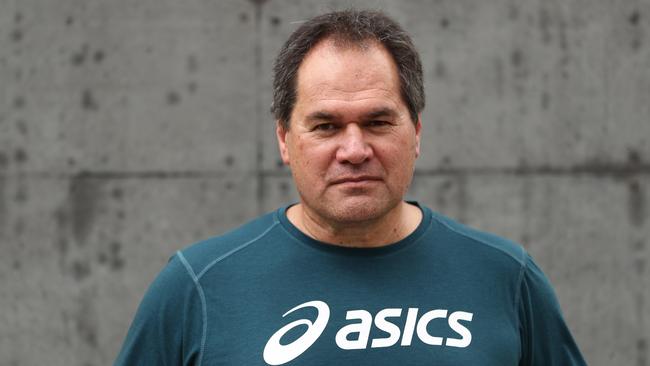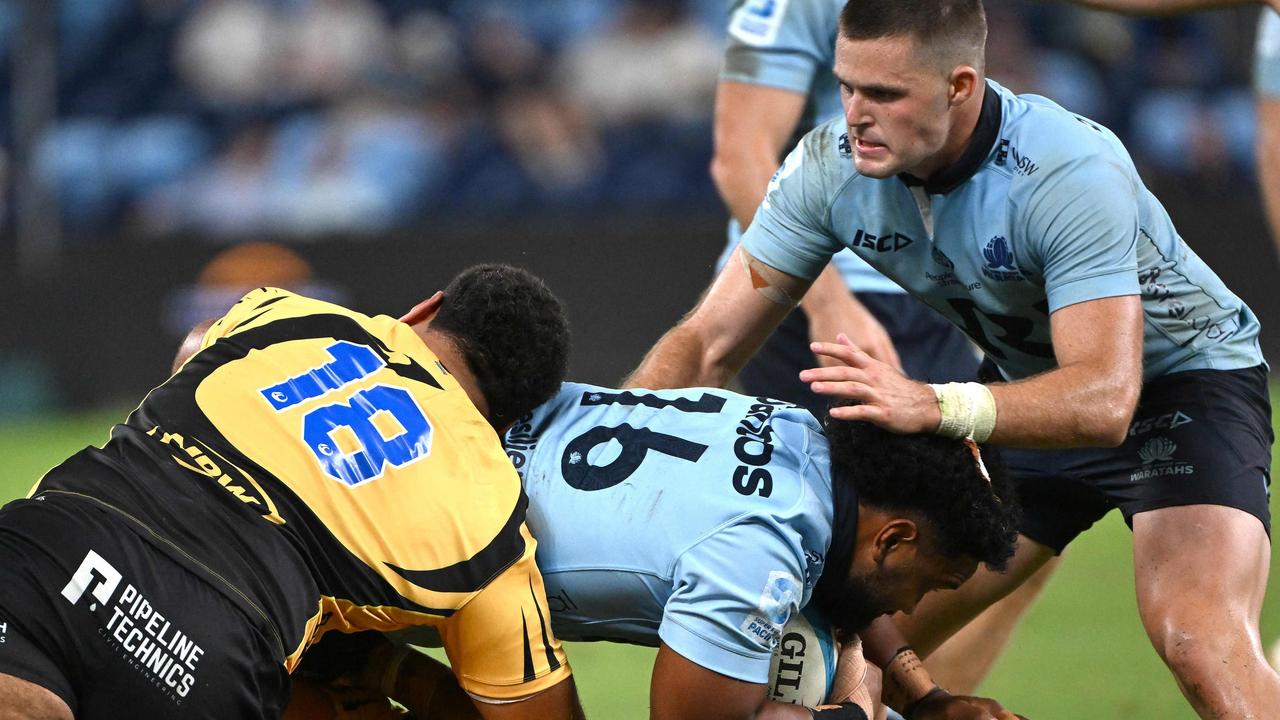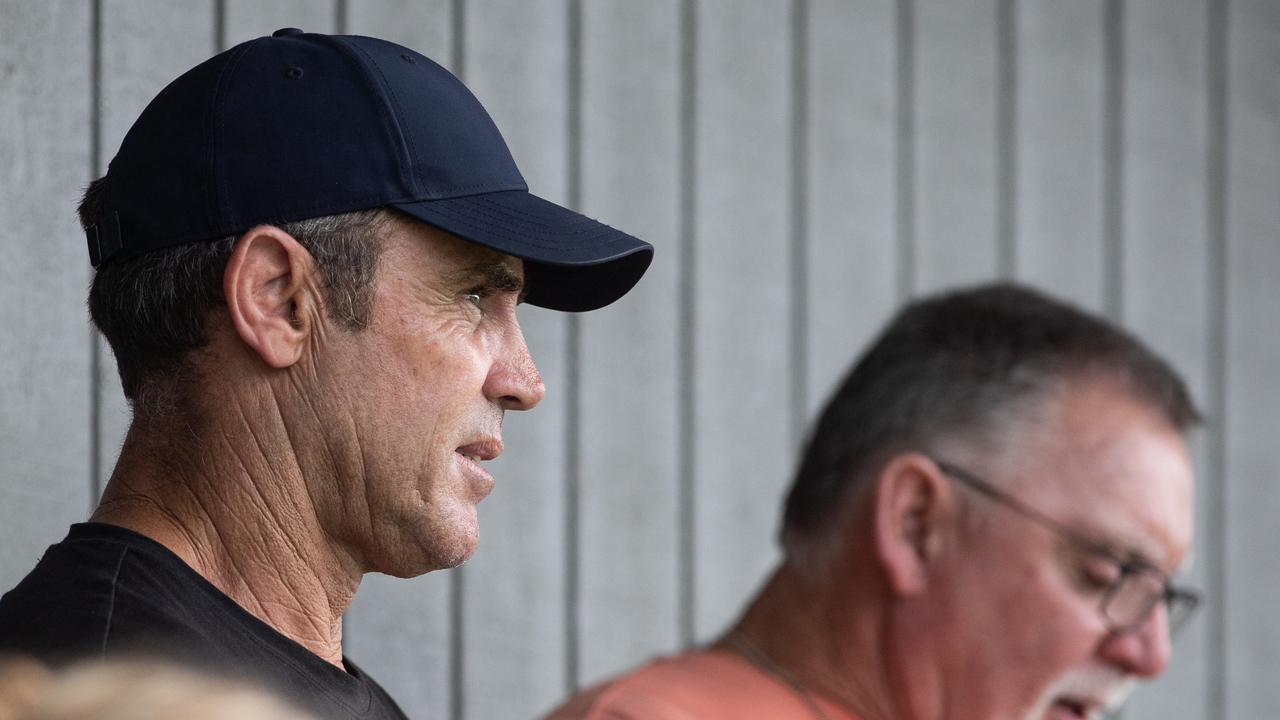Rugby union: Dave Rennie raises the threat level with his first Wallabies squad
Only one question was screamingly important for Dave Rennie: Is this squad capable of beating the All Blacks?

“Yep,” said Rennie.
Ah, succinct. But perhaps, in this instance, a bit more elaboration might be in order. After all, he was reminded, Australia has not beaten the All Blacks in New Zealand since 2001, stretching back some 23 Tests on Kiwi soil. “Yeah,” he added, “but they always had sides capable of winning, didn’t they?”
It was an absolutely fascinating answer. Any number of critics have pointed out the shortcomings of having a New Zealander as the Australian coach, but one of the primary advantages is that we are given an insight into what the Kiwis are really thinking. No more of the “we love the Bledisloe, it’s the most important trophy after the World Cup” bullshit. Even as those words were uttered at numerous press conferences over the years, they sounded so utterly false. And how often the New Zealanders betrayed their true feelings by speaking so glowingly of epic All Black-Springbok contests over the decades.
Until now, Australians had always assumed the All Blacks scarcely ever lost to the Wallabies because they felt a Wallabies win was unthinkable. But if Rennie is correct, the real reason is that the All Blacks did credit the Aussies with an ability to spring an upset – far more than the Aussies gave themselves – and roused themselves to make certain it never happened. The Wallabies, for their part, doubted themselves, doubted their capacity. And doubt led to failure, as it almost invariably does.
Rennie, however, believes his Wallabies can win. It’s a radical concept, but let’s go with it for the moment.
The next question is: How does it happen? Clearly he intends to take the New Zealanders out of their comfort zone. What Wallaby coach, having just named his first squad, has ever threatened to boycott an All Black Test? Yet that was precisely what Rennie did yesterday unless the Kiwis backed off on their ridiculous proposal to have the Wallabies to go into quarantine until October 5 and then five days later, with barely any team training, play a Test at Eden Park? The All Blacks would never agree to such a schedule themselves, yet they felt quite comfortable demanding it of the Aussies.
Rennie was having none of it. October 17, fine. But not a week before.
So much for the off-field shenanigans. Now the question is whether he will apply that same unbending mindset to the on-field task of beating the All Blacks?
If there is a secret to beating the All Blacks, it is to have threats and lots of them. Players they can’t afford to take their eyes off, not for a moment. Not just at number eight, though it was significant Rennie entrusted that position to dynamic ballrunners such as Pete Samu of the Brumbies and rookie Harry Wilson of the Reds. No room for the Test incumbent Isi Naisarani, nor Jack Dempsey of the Tahs, explosive players both, but perhaps too long between detonations.
Expect to see Lukhan Salakai-Loto in the Wallabies pack, whether at blindside flanker or lock. Rennie yesterday happened to mention his performance against the Crusaders for the Reds back in March, a powerful and apparently memorable performance on both sides of the ball. If he is used at six, then four and five become a problem. The safe solution would be to shore up the lineout by using Rob Simmons, but Australians also accept the likelihood that one or both of the Rebels locks, Matt Philip and Trevor Hosea, will be unleashed. None of Rennie’s “coach’s picks”, be it Rory Arnold or Izack Rodda or Will Skelton, can be used in the Bledisloe Tests. They are only free to return during The Rugby Championship. So, for Bledisloe I and II, it’s home-based talent only.
Taniela Tupou. His time has come though Rennie may well use him as a strike weapon, which would indicate a continuing and significant role for Brumbies captain Allan Alaalatoa. James Slipper appeals as the more damaging ballrunner at loosehead but fellow Brumby Scott Sio also has his strengths. Folau Fainga’a earns the hooking role on the threat-mete, but only if the Brumbies’ driving maul can be drilled into the national side.
The real test will come at openside flanker. Threats are needed, but that’s not what Michael Hooper delivers. He brings a workrate second to none. This too is part of Rennie’s tactical approach, with a huge emphasis on Wallabies getting off the deck quickly and into position, either to attack or defend, every time they have an involvement with the play. But if it’s a threat that’s needed, Fraser McReight’s prowess over the ball is enough to cause All Black coach Ian Foster long nights of broken sleep.
The expectation is that Rennie will go with Nic White at halfback because of his allround – that is, box kicking – game. But his crossfield running is a worry and could actually drag defenders onto the Wallabies five-eighth, be it James O’Connor or Matt To’omua. If it’s threats he wants, then Jake Gordon of the Tahs or Tate McDermott of the Reds are the players to hold those defenders close to the ruck, guarding against any snipes by the Australian number nine.
Neither is a genuine 10, O’Connor or To’omua, as opposed to young Noah Lolesio. But the 20-year-old Brumbies playmaker doesn’t need to be rushed and can learn a lot from the two 30-year-olds. The suspicion is that O’Connor has a slight edge for the five-eighth spot, but that will simply free To’omua to play at inside centre. Or vice versa. How can the Wallabies hurt the All Blacks? Both are 80 per cent goalkickers.
Jordan Petaia at 13, Marika Koroibete at 11, Filipo Daugunu or Tom Wright on the other wing and Tom Banks at fullback.
It could be that the Wallabies starting side will feature only one debutant, either Daugunu or Wright on the wing. On the other hand, there could be as many as five uncapped players in the run-on side – the right winger plus McDermott, Wilson, McReight and (granted, a long shot) Hosea.
It would be a side capable of winning. More importantly, that would be the Wallabies’ own expectation.



There were any number of issues Dave Rennie was attempting to address on Sunday when he named his first Wallabies squad – the culture of the group, an eye on the future, weaving disparate strands into one – but, really, only one question was screamingly important: Is this squad capable of beating the All Blacks?